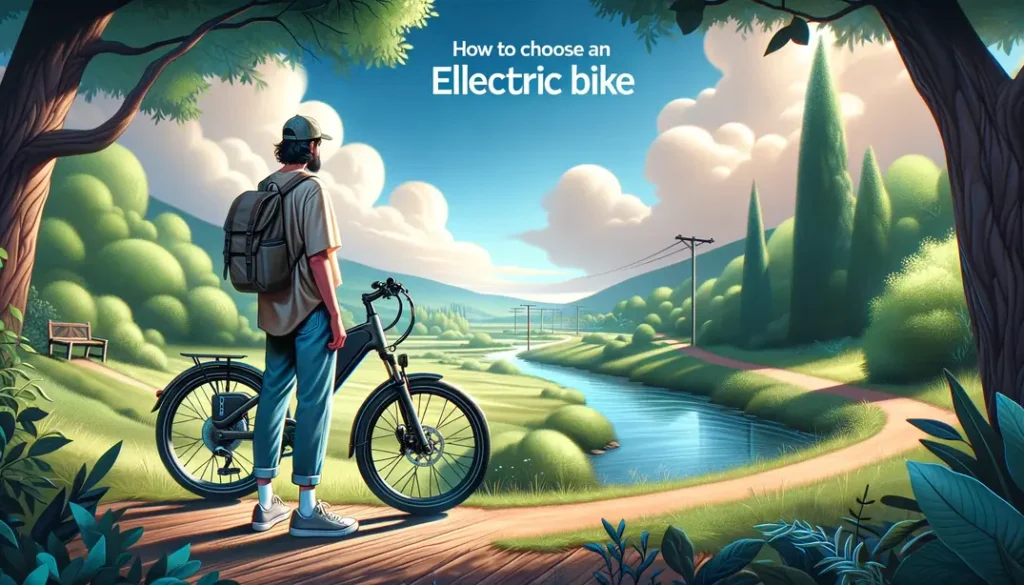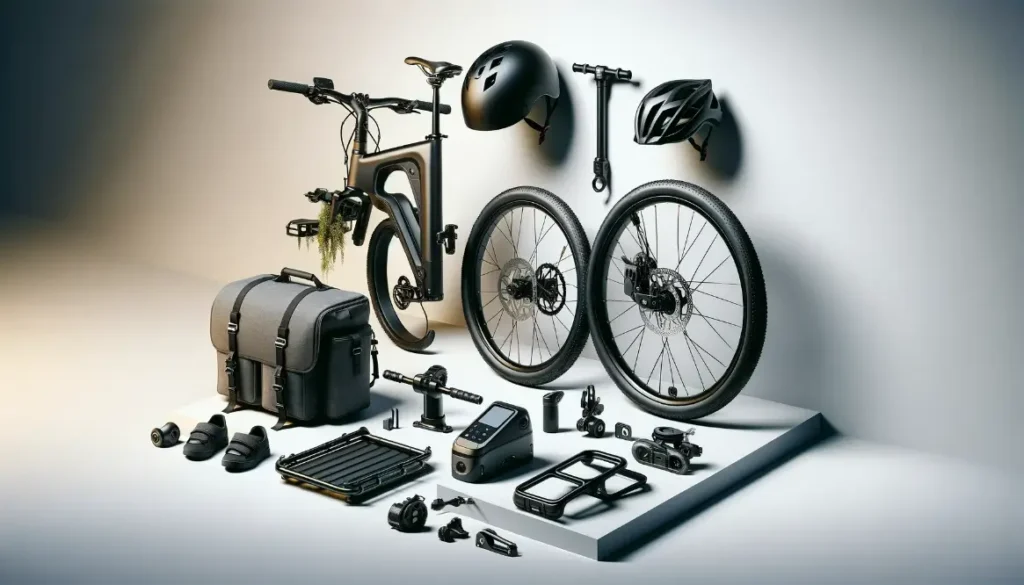
What is an Electric Bike and How it Works?
An electric bike, also known as an e-bike, is a bicycle equipped with a small rechargeable motor that provides pedal assistance or propulsion. Unlike electric mopeds or scooters, e-bikes retain a pedal-powered drivetrain. The motor only engages when the rider starts pedaling or activates a throttle.
E-bike motors provide three types of assisted pedaling:
- Pedal assist detects your pedaling force and rhythm then provides proportional motor assistance to ease the effort.
- Throttle-controlled bikes have hand-activated throttles to control motor output independent of pedaling.
- Speed pedelecs assist pedaling up to 28mph before cutting out.
Benefits of Riding an Electric Bike
Electric bikes make cycling accessible to more people via assisted pedaling. Riders gain benefits like:
- Less physical exertion – The motor augments pedaling to reduce effort over long distances, hills, and headwinds. Elderly or less fit riders can still cycle.
- Faster speeds – The electric assist system allows the bike to maintain higher average speeds with less effort.
- Carry cargo – The electric motor helps move heavier loads like groceries, kids, or camping gear.
- Commute farther  РThe reduced effort allows commuting from farther residential locations.
- Fun and adventure – Riders can explore more terrain and trails with motor-assisted access.
Types of Electric Bikes
The power delivery and speed capability differentiate electric bike models. Common types include:
Pedal Assist E-Bikes
Pedal assist systems detect your pedaling dynamics then amplify effort with a proportional electric boost up to 20mph. Sensors gauge pedal cadence, force, or torque then translate that into motor output. These are the most common and affordable e-bike models.
Throttle E-Bikes
Throttle-controlled e-bikes decouple motor output from human power input via a hand throttle control, typically on the handlebar grip. Full electric operation doesn’t rely solely on pedaling. Throttle control gives the rider adjustable speed on demand.
Speed E-Bikes
Speed pedelecs can motor to higher assisted speeds, typically 20 to 28 mph maximum. assistance tapers off at the device’s governed top speed. Speed e-bikes with higher velocity need helmet use and license plate registration in many areas..
Key Features to Consider

Motor and Battery
Look for reliable name brands on these essential components. Higher wattage motors, typically 250W to 750W, offer more torque and hill climbing capability. Lithium batteries from 36V to 48V are lighter, smaller, and longer-lasting. Higher amp-hour ratings supply more riding range. Removable batteries simplify transport for charging.
Frame Material and Design
E-bikes carry heavier loads including rider, battery, and motor. Select durable yet lightweight aluminum or carbon fiber frames. Step-through or low-step frames aid easy mounting and dismounting. Integrated head and taillights improve visibility and safety. Check standover height and dimensions to fit your body size.
See also: Can You Really Find an Electric Cycle Under 10000 in India? Discover the Truth
Brakes and Gearing
Upgraded braking systems with 180 to 203mm rotors provide more stopping power at higher speeds. Multi-gear drivetrains from 7 to 11 speed suit your fitness level and terrain. Wider, knobby mountain bike tires grip dirt trails while narrow road tires roll efficiently on pavement.
Additional Features
Purpose-built electric bikes have specialty features for commuting, off-road adventures, or hauling kids and cargo:
- Rack and fenders for errand-running & commuting.
- Suspension forks ease impacts off-roading.
- Longtail decks carry kids or lots of gear.
- Headlights and taillights for riding at night.
Where You’ll Ride Your E-Bike
Match your electric bike to the places it will travel to utilize key advantages:
On Pavement
Commuting and joyriding on roads and bike paths don’t require wider tires or shocks. Pedal assist bikes reach 20mph easily with thinner road tires.
See also: How to Prevent Electric Bike Corrosion
On Dirt Trails
Fat tire electric bikes provide stability and traction off-road. Higher clearance keeps you rolling over rocks and roots. Beefy shocks absorb rigorous trail impacts. Add a throttle for steep uphill capacity.
In Inclement Weather
Fenders shield from rain spray and road debris. Enclosed chainguards prevent penetration by water or grime. Weather-sealed batteries, connectors, and electronics resist corrosion damage. Integrated lights improve hazardous visibility.
Test Ride Electric Bikes
Don’t buy before you try! Testing ride e-bikes assess motor power, handling dynamics, control layouts, accessory features, and comfort. Proper fit ensures safety, performance, and enjoyment on every use. Dealers permit test rides to find the best e-match.
Electric Bike Accessories
Outfit your new e-bike to match activities with handy accessories:
- Panniers and cargo racks haul stuff.
- Phone mounts keep devices viewable.
- Tire pumps get you rolling after flats.
- Helmets prevent traumatic brain injuries.
- Locks thwart theft deterrence.
- Medium weight lubes protect drivetrains.
Budget for an Electric Bike
Entry-Level
Basic e-bikes cost $1000 to $2000. Quality name brand components prove durable over thousands of reliable miles. Stick with reputable companies providing strong value.
Mid-Range
Mid-priced electric bikes from $2000 to $4000 gain versatility via premium features like fatter tires, smarter displays, upgraded brakes, ergonomic saddles, adjustable stems, and useful accessories.
High-End
Top-tier electric bikes exceed $4000 offering elite power and performance. Purpose-built designs excel at high speeds, extended range, and specialty cargo or trail riding applications. Custom builds reach above $10,000.
Consider Buying Used or Refurbished
Gently used 1 to 3 year old e-bikes can provide substantial savings, often 20% to 60% off new model prices. Refurbished models may have superficial cosmetic blems while functioning like new ones.
See also: How to Ride an Electric Bike: Every New Rider Should Know
Choosing your electric bike needn’t overwhelm you. Consider where and how far you want to ride, then test models in your budget. An e-bike opens new adventures in comfortable cruising wherever wanderlust takes you!
Conclusion
Test riding and considering your riding purposes narrow the selection process of modern electric bikes. Their pedal-assisted power opens cycling to more people over farther distances. Electric bicycles retain the inherent joy of human-powered motion while easing physical exertion. Eco-friendly electrics serve practical transportation plus thrilling adventure. Hybrid human+electric bikes amplify life’s journey.
FAQs
Q: How much maintenance does an electric bike need?
A: E-bikes need basic bike maintenance like lubrication, tire checks, brake pads, plus battery and electrical system care unique to electric models. Follow factory guidelines for optimal reliability.
Q: Can you ride electric bikes in the rain?
A: Yes, with proper precautions. Weatherproof electrical connectors, sealed batteries, fenders and chainguards protect sensitive components from storm damage. Slow down on slippery surfaces.
Q: How far can electric bikes go on one charge?
A: Range varies from 20 miles up to 150+ miles depending on motor power, battery capacity, assist levels used, terrain, rider weight, and speeds. Most riders comfortably cover 20 to 50 miles in daily use.
Q: Are electric bikes safe?
A: Modern electric bicycles meet consumer product safety standards when properly maintained. Ride defensively, wear a helmet, follow traffic laws, and get bike-specific handling skills training.
Q: Can electric bikes go uphill?
A: Yes, steep hills are easier with pedal-assist motors amplifying your efforts up slopes. Throttle bikes climb on motor power alone. Higher wattage mid-drive motors best power up inclines.






